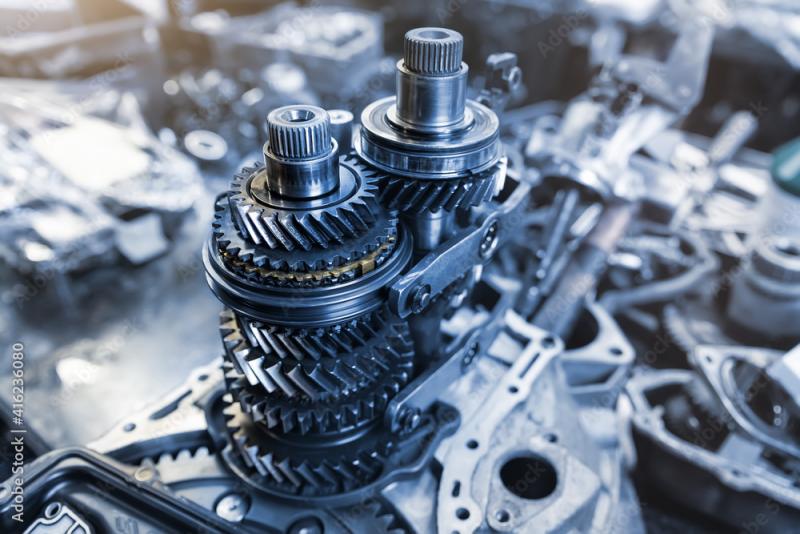Gears: The Foundation of Any Transmission
Gears are one of the most fundamental parts that make up any modern transmission system. Essentially, gears convert rotational motion and torque from one shaft to another. Most transmission systems utilize multiple gears of different sizes that work together to transfer power from the engine to the drive wheels. Gears play a critical role in enabling gear changes in manual transmissions and continuously variable transmissions. Modern transmission designs have relied upon engineered plastic and metal alloy gears to deliver maximum strength and precise gear engagement over millions of gear rotations throughout the life of a vehicle. Careful design of gear materials, sizes, tooth profiles and lubrication ensures smooth and efficient power delivery.
Planetary Gear Sets: A Revolutionary Transmission Innovation
One of the most revolutionary advancements in transmission design was the introduction of planetary gear sets. First popularized in Automatic Transmission Gears, planetary gear sets utilize a unique setup of several meshed gear components to enable smooth shifts between gear ratios. At the heart of most modern automatic and some manual transmissions lies one or more planetary gear sets. A planetary gear set typically includes a sun gear positioned at the center, meshed with planet gears that orbit it. The planet gears also mesh with an outer ring gear. Changes in rotation of one or more of these three gear components result in precise gear ratio changes. Planetary gear sets enable complex automatic transmission designs with smaller packages versus traditional step ratio designs.
Shafts: Connecting Transmission Components
Connecting all the rotating gears and components internally within any transmission are various shafts. Output shafts transfer power from the transmission to the driveshaft and differential or final drive. Countershafts are often used in manual transmissions to change the orientation of gear engagement. Transfer shafts connect components within an automatic transmission like linking the torque converter to a planetary gear assembly. These hardened steel shafts must withstand tremendous torsional loads transmitted through the transmission. Precise machining and balancing of shafts ensures smooth, vibration-free operation even at high engine speeds. Durable bearings located within the transmission housing support and guide shafts during operation.
Clutches: Enabling Gear Changes
Manual and automatic transmissions both incorporate clutches in some fashion to enable smooth gear changes. In a manual transmission, the clutch connects and disconnects the engine and transmission. Drivers operate the clutch pedal to disengage the clutch before shifting gears. Automated clutches replace the clutch pedal, connecting and releasing friction plates to change gears as needed. Within the planetary gear assemblies of automatics are several braking clutches that lock and unlock specific gear components. Carefully modulating clutch apply pressure allows smooth shifting without interruption of propulsion. Modern transmissions utilize hydraulically-operated, wet multi-plate clutches that supply precise actuation for millions of shifts over the lifetime of the vehicle.
Fluid Containment and Cooling
Keeping transmission components lubricated and cooled even during extreme operating conditions requires a precisely-engineered fluid containment and cooling system. The transmission housing forms an oil-tight reservoir, closely wrapping around gears, shafts and other components while allowing them to rotate freely. Small external and internal leakage can be devastating to a transmission. Fluid circulation picks up heat generated by components under load and transfers it to an external oil cooler before returning to bathe components again. Transmission filters remove contaminants to extend fluid and component life. Advances in fluid chemistry and cooler designs have enabled transmissions to handle more torque output from today's powerful engines.
Control Electronics: The 'Brain' Behind Smooth Shifting
On modern automatic transmissions, intricate control electronics lie at the heart of smooth gearshifts. Sensors continuously monitor operating parameters like vehicle speed, engine speed, throttle position and brake application. Based on pre-programmed shift maps, a transmission control module (TCM) determines the optimal time to apply various clutches and brakes within the planetary gear sets. Fast-response solenoids precisely control hydraulic pressures micro-seconds before and after each gear change. Drivers feel no interruption in power delivery during shifts. Advanced learning algorithms in TCM software optimize shift qualities over time. Today's transmissions fully shift themselves without any driver effort required except accelerating or braking.
The core components within today's automatic and manual transmissions—gears, shafts, clutches and hydraulics—work in concert to efficiently deliver power from the engine to the wheels. Technological progress has resulted in advanced gearing designs like planetary sets, stronger lighter materials, precise controls and superior fluids. Transmission innovations have largely been responsible for the tremendous gains in fuel efficiency and performance of modern vehicles while providing convenience unlike any generation before. With new materials and electronic advancements on the horizon, automotive transmissions will continue evolving to meet society's changing mobility needs.
Get more insights on this topic: Automotive Transmission Systems
